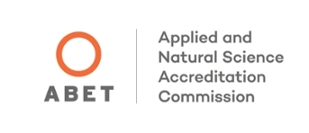We are accredited by The Applied and Natural Science Accreditation Commission of ABET under the commission's General Criteria and Program Criteria for Applied Science Bachelor (four-year degree) programs.
ABET accreditation is a significant achievement for ISAT. The accreditation ensures that our program meets high educational quality standards and demonstrates our commitment to the continuous improvement of the quality of our program – both now and in the future.
Our accreditation is important to all constituents we serve. It means that
- Our students are ready to pursue their professional careers when they graduate.
- Employers can recruit graduates they know are well-prepared.
- Parents can be sure that their time and money are well spent educating their sons and daughters.
- Licensure, certification, and registration boards know that our graduates are being prepared.
- Graduate schools recognize our graduates as having the skills and attributes required for admission.
- Our institution supports our program and provides the resources needed to sustain it.
When choosing an accredited program such as ISAT, you choose wisely. Accreditation assures that ISAT has met educational quality standards set by the applied science profession. To employers, graduate schools, and licensure, certification, and registration boards, graduation from an accredited program signifies adequate preparation for launching a professional career. Many of these groups require graduation from an accredited program as a minimum qualification. ABET accreditation is an important indicator of the program’s commitment to quality and may be a key to your successful professional future.
Accreditation Assures Program Quality and Continuous Improvement
The faculty and students of the ISAT program are committed to the continuous process of self-examination to ensure that we are meeting the highest standards of rigor and relevance in our pursuit of educational excellence. In its self-examination process, the program has been using a two-loop evaluation process. The two loops represent complementary quality assurance and improvement processes. The right loop deals with the assessment of Program Outcomes through the curriculum delivered and what the students learn, according to established metrics and criteria. The assessment should indicate to what degree the program is achieving its educational mission and program goals and objectives. The left loop represents the continuous process for establishing and improving the educational objectives, outcome metrics, and evaluation methods incorporating feedback and results from outcome-based assessment that occurs in the right loop.
Program Educational Objectives
The ISAT Program is an integrated and applied science program that prepares students to become critical thinkers and lifelong learners able to develop multi-disciplinary solutions to scientific and technological problems with sensitivity to social, ethical, and political contexts. To verify that these expectations are being met, seven program educational objectives (PEOs) have been identified for the BSISAT Program. These objectives represent skills and attributes that BSISAT graduates should demonstrate within several years after graduation.
A graduate of the BSISAT undergraduate program will be a holistic problem solver who will:
- Seek to understand the systems from which problems emerge, including the technological, institutional, cultural, and natural dimensions.
- Use both social and natural science methodologies to understand and solve problems.
- Adopt a long-term perspective by understanding the historic evolution of a problem.
- Demonstrate sensitivity to political, social, and ethical contexts.
- Perform comfortably in multi-disciplinary teams.
- Communicate effectively with others.
- Be self-reflective about their analysis, careful to articulate their own mental models and assumptions, and to subject them to scrutiny.
Student Outcomes
Student Outcomes describe the knowledge, skills, and behavior that ISAT students are able to demonstrate upon graduation. These Learning Outcomes prepare graduates to achieve the Program Educational Objectives listed above within a few years of graduation. The Student Outcomes or the BS ISAT Program are:
- ISAT graduates apply foundational disciplinary concepts in mathematics, physical sciences, biological sciences, and earth sciences.
- ISAT graduates use the methods, tools, and technologies of natural, social, and system sciences to investigate complex problems.
- ISAT graduates integrate concepts across disciplines to describe characteristics, properties, and dynamics of systems.
- ISAT graduates work effectively in multidisciplinary teams.
- ISAT graduates define and frame problems by seeking to understand the contexts from which they emerge, including the natural science, technological, institutional, cultural, social, and economic dimensions.
- ISAT graduates understand and apply the principles of ethics.
- ISAT graduates communicate effectively on social, scientific, and technical matters.
- ISAT graduates analyze the
societal dimensions of science and technology using tools and methodologies from the social sciences and humanities. - ISAT graduates are autonomous, self-directed learners who recognize the need for lifelong learning.
- ISAT graduates propose and evaluate potential solutions within the context of the system from which the problem arises.
- ISAT graduates effectively develop and use process and systems analysis models and tools to characterize and describe a complex problem.
Program Enrollment and Graduation Data
All enrollment and graduation data can be found on the JMU Office of Institutional Research. (Listed under the College of Integrated Science and Engineering)


